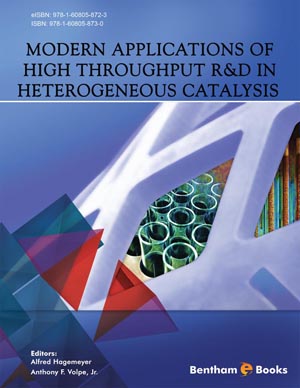Abstract
High Throughput Experimentation (HTE) has over the past 15 years become a mature technology platform that has found entry in almost all disciplines in catalyst and process research and development. The drivers that have led to this massive aspiration within academia and industry are clearly associated to HTE´s largest promise: a dramatic increase in efficiency. This increase in efficiency, if exploited appropriately can lead to two effects that explain the appreciation from the academic and industrial point of view. Firstly with increased efficiency HTE offers the perspective to take a look at catalyst or process options outside of “conventional” corridors. Secondly HTE holds promise to pave the path for shortened experimental periods to gain systematic insights, offering the perspective of faster time-to-market. From the point of view of the technology platforms which are available today it can clearly be seen that market demands have pushed the technology providers from initial smart and unconventional designs for accelerated screening to elaborated platforms that can map catalyst behavior and display response patterns to process conditions within technically relevant reaction corridors with unexpected precision. This clearly uprates HTE utilized in catalyst and process development over its roots in the pharmaceutical industry where it is still mainly used for screening purposes. Our intention is to give the reader an entry and an integrative overview into the mindset, solution approaches and challenges of HTE and enable her/him to critically formulate the right questions to ask and how to judge aspects of feasibility. The core aspect in this chapter will be centered on workflow development for certain applications narrated as case studies that are considered prototypic for a whole technology segment. All the aspects in the “Design- Make-Test-Model”-cycle will be discussed in these case studies. In our conclusions we will give an outlook and try to get a glimpse of the future.
Keywords: Combinatorial Chemistry, Computational Chemistry, Database, Dehydrogenation, Design-Make-Test-Model, Design of Experiment, Fischer-Tropsch, Heterogeneous Catalysts, High Throughput Experimentation, High Throughput Screening, High Throughput Synthesis, High Throughput Workflow, Hydrocracking, Hydrotreating, Materials Library, Partial Oxidation, Software Architecture, Split and Pool, Stage I, Stage II, Stage III.


















